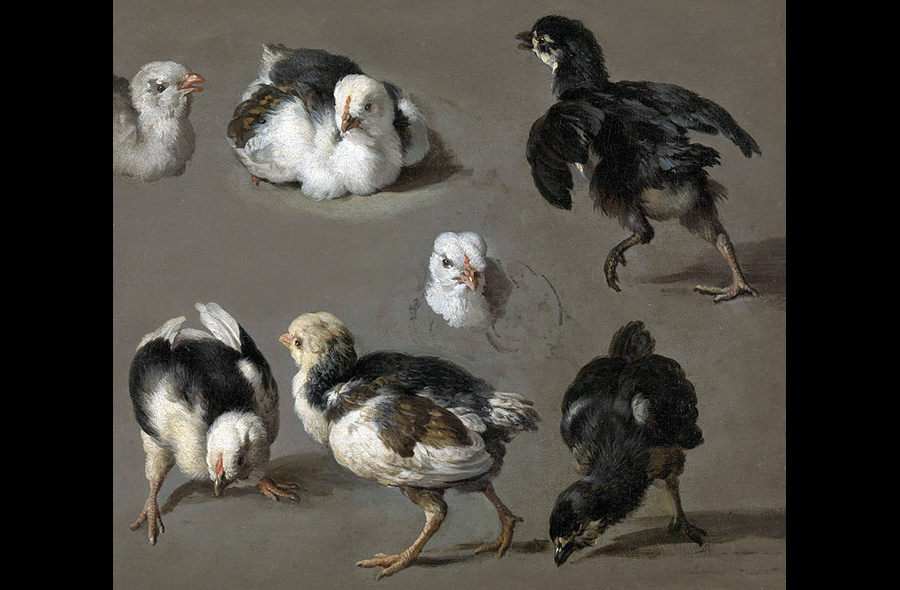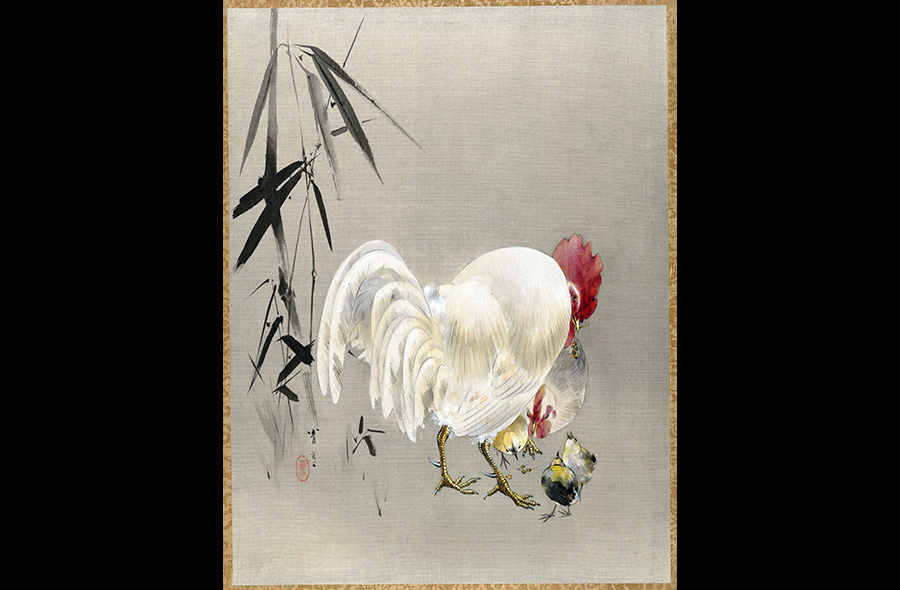“It may be the rooster that does all the crowing but it’s the hen that delivers the goods.”
Jim Hightower
[Scroll down for gallery of roosters and chickens in art history.]
 Roosters in Art History [*]
Roosters in Art History [*]
“Roosters have a place in art history. We don’t think too much about the cocky bird being something to crow about when it comes to a historical perspective in art but the fact remains that roosters actually have a great deal of symbolic meaning. Mostly I’m going to write about roosters and what they mean in the Christian history of art. I’ve chosen three pieces in art history just to show that artists have been depicting the showy and noisy bird for a couple of thousand years—at least.
Roosters announce danger. We can look out for things that might get in the way of a virtuous life. “In Christian symbolism, the rooster is a familiar Passion symbol. Prior to being arrested by the soldiers, Jesus correctly predicted that Peter would deny Him three times before the rooster crowed on the following morning. At the rooster’s crowing, Peter remembered Jesus’ words and went out and wept bitterly. The rooster represents Peter’s denial of Christ and also stands for his remorse and repentance upon hearing the rooster’s crow. Because Peter later became the leader of the early Church, the rooster represents papal vigilance.”
*Quotation above is taken directly from the website cited and is the property of that source. It is meant to inform the reader and to give credit where it is due.
 Looking at The Masters: Painting Farm Animals [*]
Looking at The Masters: Painting Farm Animals [*]
“Chickens, ducks, and other foul were valued for their eggs, feathers, and meat. “Seven Chicks” (1665-68) was painted by Melchior de Hondecoeter (1636-1695), a Dutch painter who specialized in bird studies. The “Seven Chicks” includes several poses, colorings, and head studies of baby chicks. The artist captures the lopsided walk of one chick, two feeding chicks, a nesting chick, and baby chicken heads from various views. The sketch shows his exceptional observational skill and his devotion to his beloved subject matter.
Dutch painters of the 17th Century were the first European artists to start painting landscapes, because land was owned by commoners as well as by nobles. Throughout the history of art, the subject matter that was most depicted was an indication of what was most important at the time. The newly freed Dutch had no king, and the various new Protestant churches had no single religious authority as previously exercised by the Catholic church. The Dutch became the merchants and tradesmen of Europe, and most trading ships sailed into the port of Amsterdam, where goods were then distributed to the rest of Europe. The Dutch owned their land and their homes, and they looked for small works of art that would fit on the walls of their small homes. The people, rather than the church or state, became patrons of the arts, and a thriving art market developed as a result. Three new subjects were added to painters’ repertoire: genre (paintings of everyday life), still life, and landscapes. European artists frequently painted horses and dogs since they were commissioned by the wealthy owners. Even though the Dutch were responsible for initiating landscape painting, ordinary farm animals were painted by a very few artists, but those artists were masters.”
*Quotation above is taken directly from the website cited and is the property of that source. It is meant to inform the reader and to give credit where it is due.
















